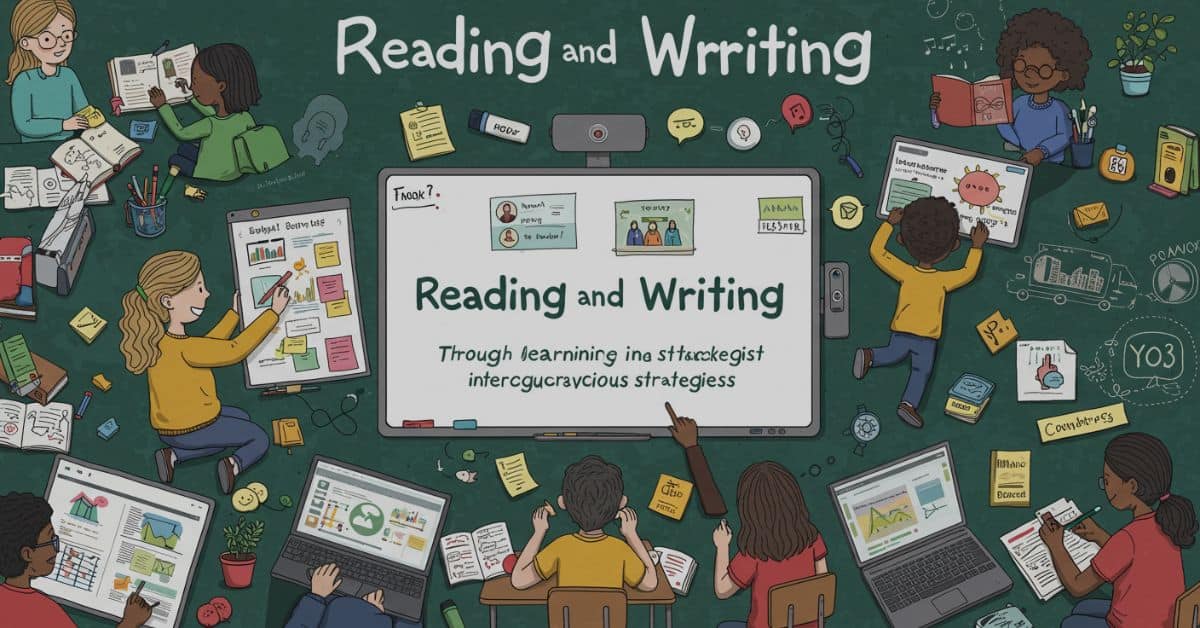Contents
- 1 Introduction to interactive strategies
- 2 Benefits of interactive reading and writing
- 3 Examples of interactive reading strategies
- 4 Engaging students with interactive writing activities
- 5 Technology’s role in interactive reading and writing
- 6 Implementing interactive strategies in the classroom
- 7 Conclusion
Introduction to interactive strategies
Reading and writing are fundamental skills, yet traditional methods can sometimes leave students feeling disengaged. Imagine a classroom buzzing with excitement—students not just reading words on a page but interacting with the text in meaningful ways. Picture them crafting stories collaboratively, using technology to enhance their understanding and creativity.
Interactive strategies breathe new life into these activities, transforming passive learning into dynamic experiences. These methods promote critical thinking and collaboration while making literacy enjoyable for everyone involved. Let’s dive deeper into how interactive approaches can elevate both reading and writing in your educational environment!
Benefits of interactive reading and writing
Interactive reading and writing breathe life into traditional literacy practices. These strategies foster engagement, allowing students to connect deeply with texts.
When learners participate actively, they grasp concepts better. Understanding improves as they discuss ideas and share perspectives. This collaborative approach nurtures critical thinking skills.
Additionally, interactive methods enhance retention. Students remember information longer when they interact with it creatively—whether through discussions or hands-on activities.
Another notable benefit is the development of communication skills. Writing collaboratively encourages teamwork while expressing thoughts clearly becomes a priority.
Furthermore, these strategies cater to diverse learning styles. Whether visual, auditory, or kinesthetic, every student can find ways to engage that suit their preferences.
Fostering a love for reading and writing in such an interactive manner prepares students for lifelong learning experiences beyond the classroom walls.
Examples of interactive reading strategies
Interactive reading strategies invite students to dive deeper into texts. One effective technique is the “Think-Pair-Share” method. Here, learners reflect on a passage before discussing their thoughts with a partner. This encourages critical thinking and collaborative learning.
Another approach is using graphic organizers. These tools help students map out characters, settings, and plot lines visually, making complex narratives easier to digest.
The “Read Aloud” strategy also shines in interactive environments. Teachers can model fluent reading while encouraging students to join in or echo phrases. This builds confidence and enhances comprehension skills.
Incorporating questioning techniques invites curiosity. Asking open-ended questions during reading sessions fosters discussion that goes beyond surface-level understanding.
These strategies not only engage but also empower students as active participants in their learning journey.
Engaging students with interactive writing activities
Interactive writing activities ignite creativity in students. They transform the mundane task of writing into an engaging experience.
Consider collaborative story creation. Students can contribute lines or paragraphs, building a narrative together. This fosters teamwork and sparks imagination.
Another effective method is shared writing sessions. The teacher guides students through the process while they share ideas aloud. This encourages participation and helps develop critical thinking skills.
Using prompts can also stimulate interest. Ask students to write about a character’s dilemma or invent an alternate ending to a familiar tale. These tasks encourage them to think outside the box.
Incorporating peer reviews enhances engagement too. When students give feedback on each other’s work, they learn from different perspectives and become more invested in their own writing journey. By making writing interactive, we create opportunities for laughter, learning, and connection among peers.
Technology’s role in interactive reading and writing
Technology has reshaped how we approach reading and writing. Digital tools create immersive experiences that engage students on multiple levels. Interactive e-books, for instance, incorporate multimedia elements such as videos and quizzes that enhance comprehension.
Apps designed for collaborative writing allow students to co-create stories in real time. This fosters teamwork while developing essential communication skills.
Moreover, social media platforms enable young writers to share their work with a broader audience. Feedback becomes instantaneous, encouraging revisions and creativity.
Gamification is another powerful aspect of technology in education. Game-based learning transforms traditional tasks into dynamic challenges that motivate learners.
These digital resources not only make reading and writing more accessible but also cater to diverse learning styles. Students can explore content at their own pace, making the process both engaging and effective.
Implementing interactive strategies in the classroom
Implementing interactive strategies in the classroom can breathe new life into traditional learning. Teachers are discovering that engaging students in hands-on experiences fosters deeper understanding.
Start by integrating group discussions and collaborative projects. Encourage students to share their thoughts and insights, creating a richer dialogue around texts.
Utilize stations with different activities related to reading or writing. This approach allows learners to explore concepts at their own pace while providing opportunities for exploration and creativity.
Incorporate visual aids, like graphic organizers, to help students map out ideas. These tools make complex information more digestible and encourage critical thinking.
Don’t shy away from using games as learning mechanisms. They stimulate interest and motivate participation, transforming lessons into enjoyable challenges.
Keep an eye on feedback. Adjust your methods based on what resonates most with your students’ interests and abilities; this adaptability will enhance the overall experience of interactive learning.
Conclusion
Interactive strategies have the power to transform both reading and writing experiences in the classroom. They create a dynamic environment where students become active participants in their learning journey. By incorporating these methods, educators can foster deeper comprehension and encourage creativity.
The benefits of engaging students through interactive techniques are numerous. Learners are more likely to retain information when they actively interact with texts or collaborate on writing tasks. This engagement leads to improved literacy skills and boosts confidence among students.
Implementing interactive strategies goes beyond traditional teaching methods. It encourages collaboration, critical thinking, and communication skills that are vital for success in today’s world. As technology continues to evolve, it opens up even more opportunities for innovative approaches.
As teachers explore new ways to engage their classrooms, utilizing interactive reading and writing strategies will undoubtedly enhance the educational experience for both instructors and learners alike. Embracing this shift can lead not only to higher academic achievement but also to a love of lifelong learning that extends far beyond school walls.
Ethan Cole is a versatile writer at hsnime.co.uk, offering fresh perspectives and engaging content across various topics. With a passion for creativity and knowledge, Ethan aims to provide insightful articles that resonate with a diverse audience.






